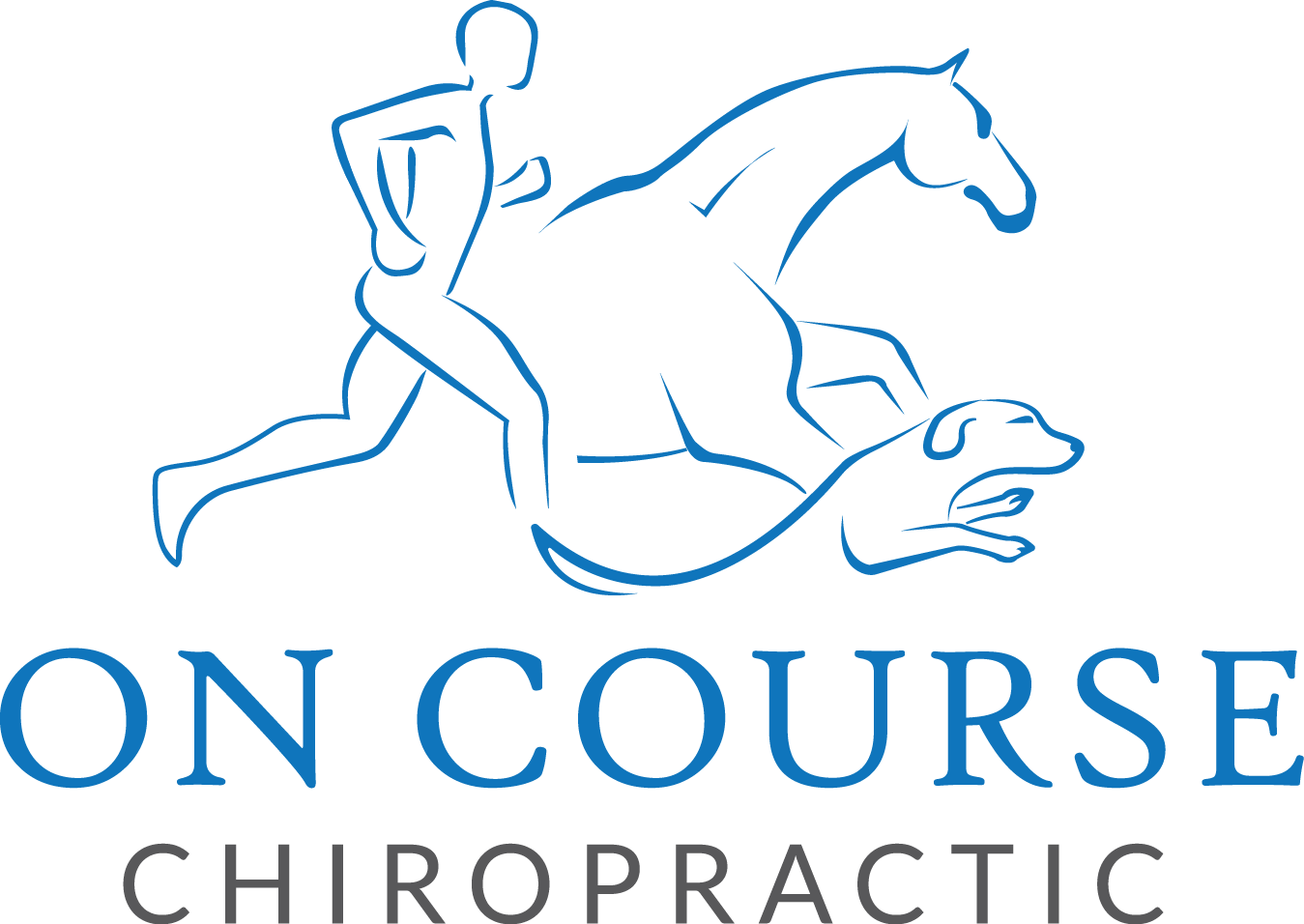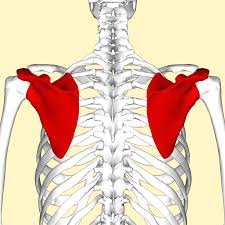It's more than just good equitation. The shoulder complex plays a big role in our overall balance, and can have a huge impact on our ability to have a proper contact with the horse. Our shoulders are connected by muscles and fascia that run into the lower back as well as the arms, neck and chest; this makes the shoulder a vital anatomical junction.
It can be tricky to figure out exactly what to do with the upper body to end up in the right posture without stiffening through the contact. This is because our ability to have a soft contact relies on both our ability to balance independently and the way we hold our arms. In this blog, we are going to build on our previous discussion about creating a stable, well-aligned pelvis and take a look at your upper back and shoulder mechanics!
Anatomy time!
First we need to define the two types of shoulder motion that can occur: glenohumeral (GH) joint motion and scapulothoracic joint motion. I promise, understanding this will help you organize yourself in the saddle.
Glenohumeral (GH) joint motion: When you raise your elbow or reach out beside you, most of that motion is coming from the glenohumeral joint where your upper arm meets the shoulder blade. The glenohumeral joint is held in place by the rotator cuff, a group of muscles that simultaneously allows for a complex variety of motions, and works to keep this very mobile joint stabilized. When riding, this is the joint that the natural forward and backward motion of your elbow should be coming from.
The main shoulder joint is called the "glenohumeral joint" and is held in place by the rotator cuff muscles. It allows you to move and rotate your arm.
Scapulothoracic joint motion: When you shrug your shoulders, most of that motion is coming from the scapula (another word for shoulder blade) moving up and down over your thorax (the back of your ribcage). The scapulae can also move towards and away from each other. Try it now! In riding, this joint has a primary function of postural stabilization.
The "scapulothoracic joint" is the connection between your shoulder blades and your ribcage. Positioning of this joint is really important in riding.
What happens in the saddle
As riders, bringing the shoulders forward or back is often interpreted as bringing the whole upper body forward or back. An important thing to conceptualize as a rider is that you can move your shoulders independently of your torso, via the shoulder blades.
A lot of riders when they think of the phrase "shoulders back" end up doing something like this...
When the upper body comes too far back, this creates extra strain on the entire spine (note the excessive posterior pelvic tilt and forward head posture), difficulty balancing without using the reins, and gripping up with the leg. Also notice the shoulder blades have protracted (rounded forward), causing the chest to cave in and the upper back to "leak' out backwards through them.
...when they should really be doing something more like this:
This rider has correctly retracted the shoulder blades, opening across the front of the chest, allowing the upper arm to hang by the side of the body while keeping the torso perfectly balanced over the centre of gravity and maintaining pelvic neutral
Positioning your shoulder blades:
In an ideal world (in life as well as riding!) the shoulder blades move closer to one another, opening the chest and keeping the upper back from rounding, and slide down the back at the same time. This downward action comes from engaging the lats, which create a connection into the low back, via a thick, strong layer of fascia. When the lats are activated, the connection from the contact can be transmitted straight into the rider's seat and collecting aids become a lot clearer to the horse.
Your lats (short for latissimus dorsi) run from your shoulder all the way in to your low back. To engage them, think of pulling your shoulders down away from your ears.
Here's how:
Stand face-on to a mirror so you can see your head and shoulders, with your arms relaxed at your side. Stand up straight, bring your ear back over your shoulder with a bit of a chin tuck, find a nice neutral pelvis and engage your core. From this position, think of drawing your shoulder blades closer together behind you without changing the position of your ribcage. Avoid the temptation to allow the front of the ribcage to drift up away from the hips or arch through the low back. If you are stiff through your upper back you will find this challenging. Part two of this series will look at ways to address this.
Drawing the shoulder blades back and down provides postural stabilization that is key for balanced riding, and actually sets up the shoulder joint in a way that makes it easier maintain a soft and consistent contact with the reins.
As you draw your shoulder blades back, check the height of your shoulders in the mirror. Did they come up towards your ears? If so, try to keep the shoulder blades back together, as you drop them down towards your back pockets (this is where your lats come in). Make sure you stay nice and tall through the back of your neck as you do so.
Turn side-on to the mirror and observe your shoulders in relation to your ribcage: you should be able to slide them backward (retraction) and forward (protraction) around your ribcage.
Left: The shoulder blades are correctly retracted on the ribcage, which can now come forward and through the arms. The shoulder joint is well positioned to allow the elbow to travel forward to soften the contact when needed.
Right: The shoulder blades are protracted, leading to a collapse of the chest The upper back has leaked backwards in relation to the shoulders. Many riders assume this position in an effort to soften the contact but it actually stiffens the arms and throws the upper body out of balance.
If this feels unnatural or difficult to co-ordinate, you aren't alone! A lot of people have never been taught to coordinate their bodies in this way and often bad movement patterns creep in due to many hours sitting at work or school throughout the week. The good news is, you can practice your scapular mobility just about anywhere! Stopped at a red light? Do a few scapular retractions. Waiting in line at the bank? Get those lats working!
Many repetitions will eventually make this movement pattern feel like second nature. If you are really struggling to find out if you've got it or not, consult a fitness trainer or manual therapist such as a chiro or physio to help make sure you're on the right track.
Part two of this series will further discuss the relationship of shoulder positioning with contact, and provide some great exercises to strengthen your shoulders and postural chain for riding.
Happy riding!
-Steph :)

















